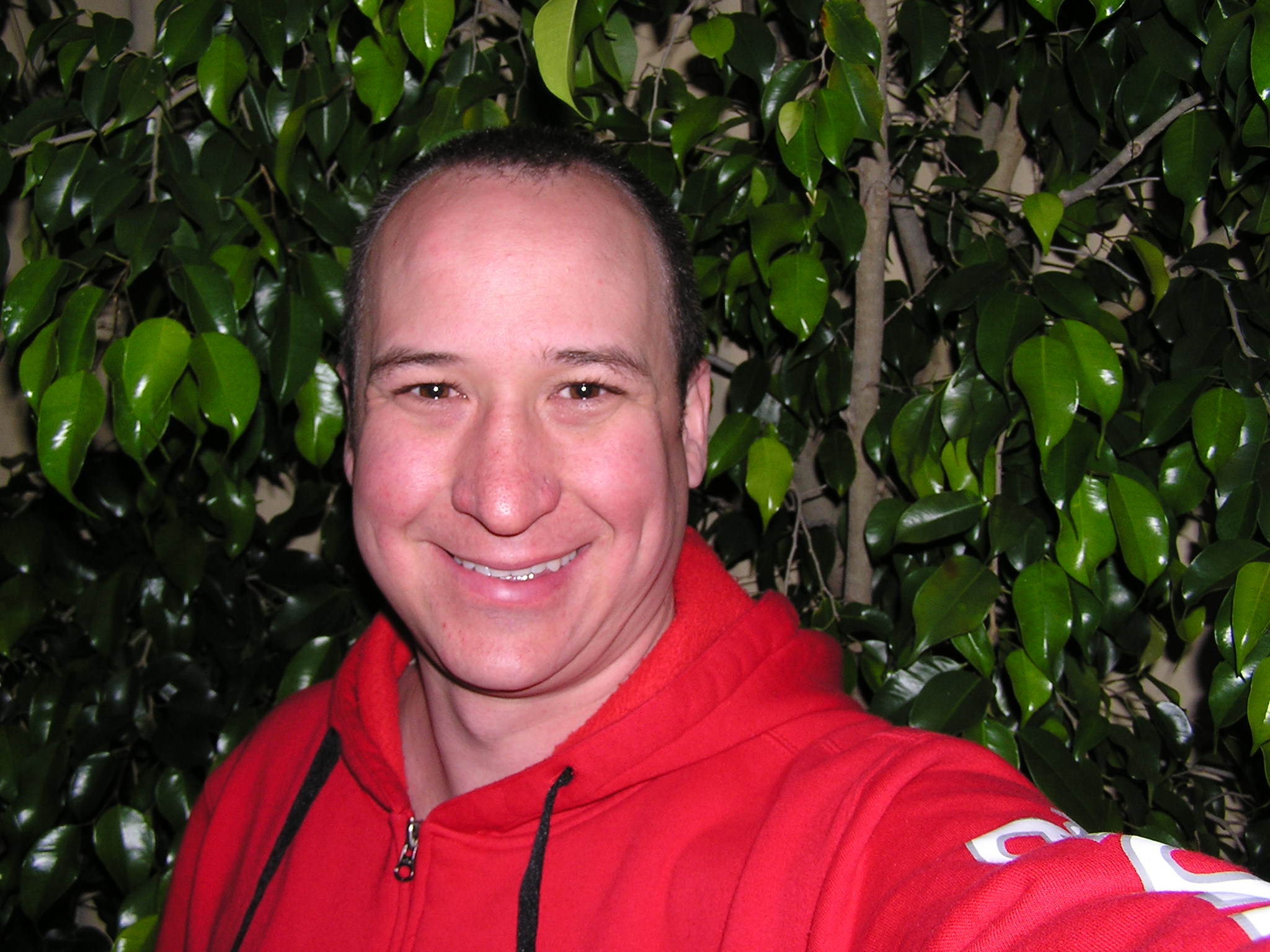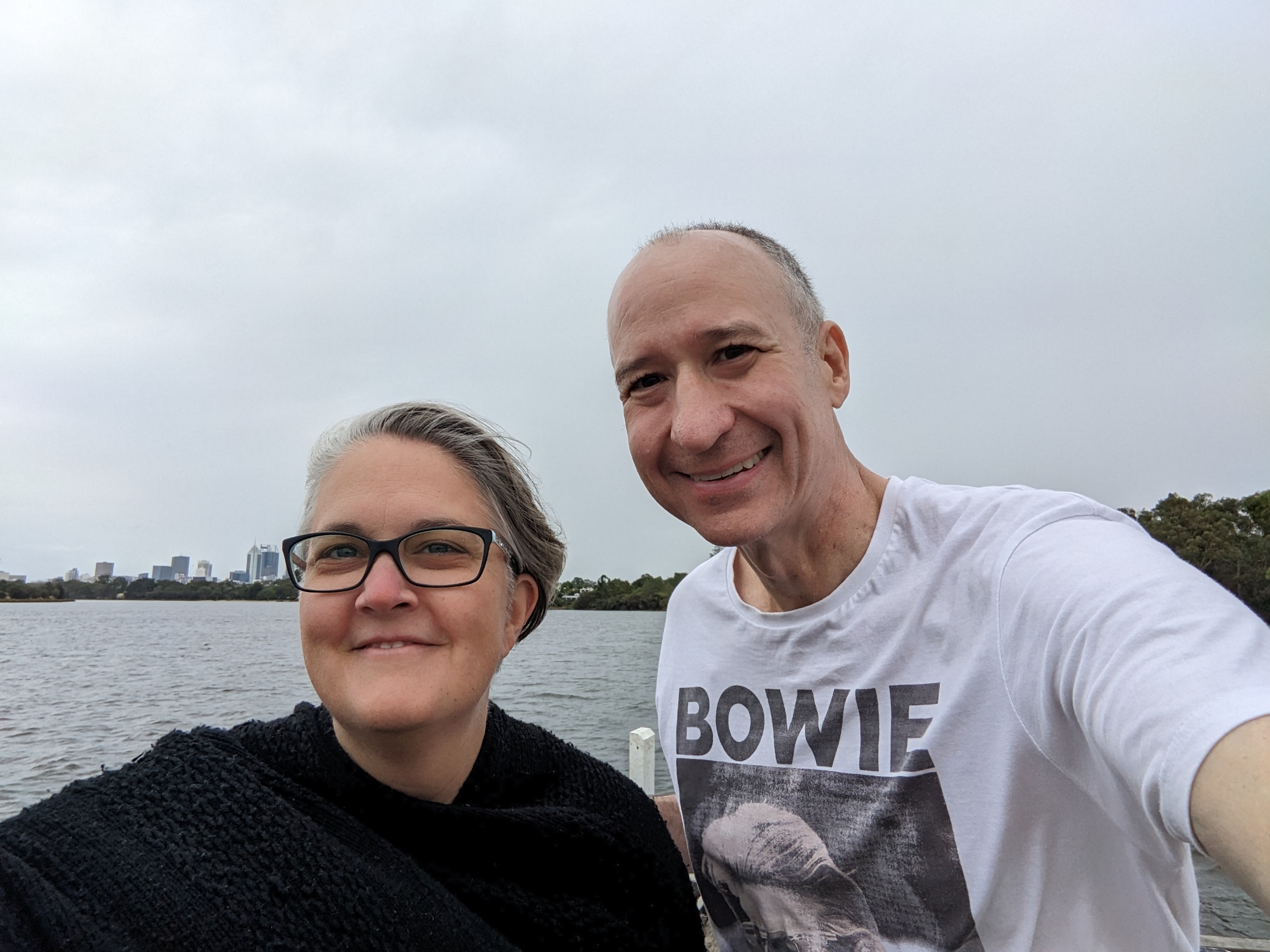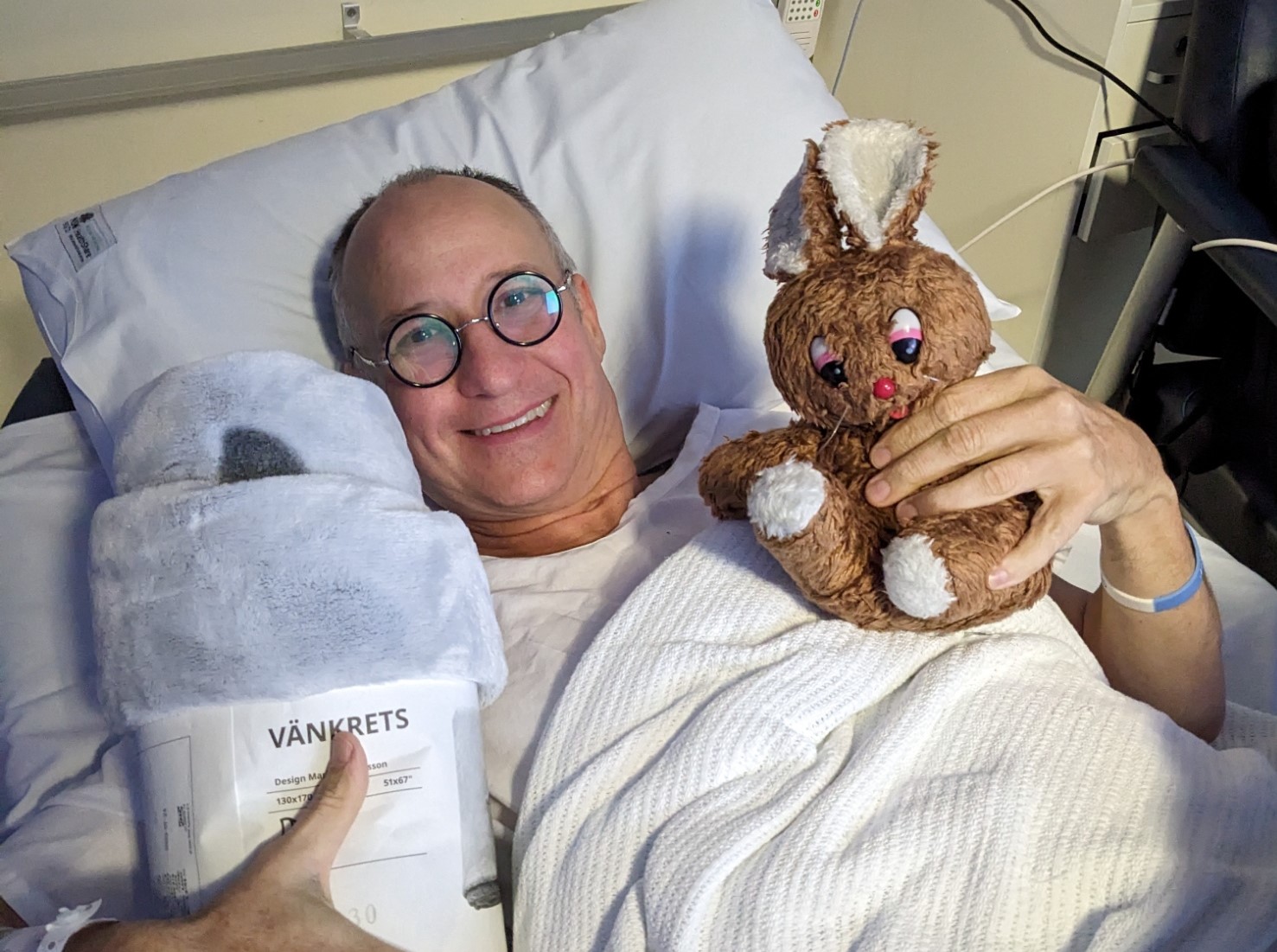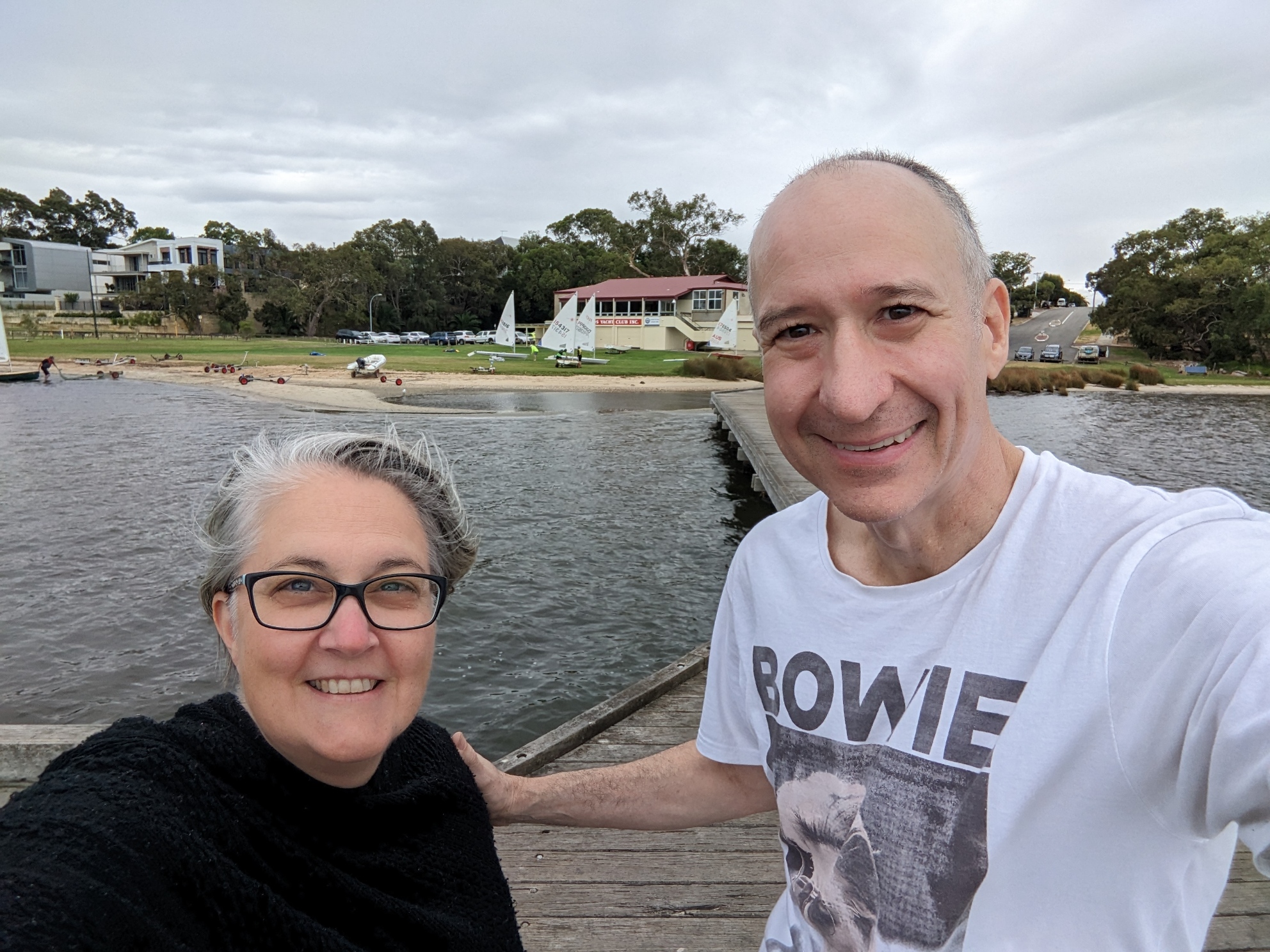Hello,
My name is Paul Eddington. I am 53 years old (born in 1970), never married, and no children. I have a rare cancer called pseudomyxoma peritonei (PMP).

Here is how it all went down…..
In March 2023, I finally decided to see my GP to work out why my neck muscles were spasming when I turned my neck a certain way. I was sent off for a cervical CT to look for spinal nerve impingements. When we got the results, not only could they see the nerve impingements, but also that C3 and C4 had self-fused.
Vertebrae self-fusing is not a normal event, so my GP sent me off for a series of blood tests. One test came back positive: ankylosing spondylitis (otherwise known as bamboo spine).
In short, and given enough time, I have a spinal column that is very slowly going to change from 33 separate bones, into one long bone. The C3/C4 fusion is complete, and C4/C5 aren’t far behind.
I then became concerned as to how many of my other vertebrae had fused. So my GP sent me off for a thoracic/abdominal/pelvic CT scan. The results indicated no more vertebrae fused, but there was an incidental finding…… large ascites.
I’m the first to admit that I didn’t know the word ascites when I saw it on that report. I now know all about it. Ascites is an orange-brownish fluid that is produced by several abdominal cancers including PMP.
The really upsetting news was that ascites is a defining characteristic of stage 4 abdominal cancer.
I then started a regime of attending Fiona Stanly Hospital every two-weeks or so to have the ascites drained.
We had cytology done on the first lot of ascitic fluid. The results were life-changing for me. The cytology confirmed pseudomyxoma peritonei (PMP).

My PMP originated in my appendix. So my primary cancer is appendiceal.
When the appendix becomes diseased, it expresses free-floating tumours out into the peritoneum (abdominal cavity). Then the ascites washes that tumour around all corners of the peritoneum. If the tumour gets lucky and brushes up against a blood-supply, then it latches on and begins to grow and infect that organ with cancer.
So as you can imagine, PMP goes from stage 1 to stage 4 in very rapid order. And worse than that – it is painless. I had stage 4 cancer and I didn’t even know about it.
I went to the GP to find a treatment for my neck pain. I ended up with stage 4 PMP and not a great prognosis for the future.
I was then referred for a ‘staging laparoscopy’. Basically, the surgeon inserts a small camera into your abdomen to get a visual understanding of the severity of the disease.
This is where things went from bad to diabolical. The grading is indicated by a Peritoneal Cancer Index (PCI). Briefly, the abdomen is divided up into 13 sections. Each of the 13 abdominal regions (0–12) are given a score a score ranging from 0 (no tumour seen) to 3 (tumour >5 cm or confluence).
My PCI was 39/39 meaning my entire abdominal cavity was covered in tumours greater than 5 centimetres in width in all sections.
The Perth specialist surgeon declined me for the CRS+HIPEC operation, and instead referred me to an oncologist. The surgeon instructed me to do 6 months of chemotherapy with the oncologist, and then come back for a second laparoscopic staging.
I completed 3 months of chemotherapy with FOLFOX as my poison. And poison is what it did. It made me quite unwell, and the tumour marker numbers in my blood went up, not down.
So rather than do another 3 months on chemo, I investigated other options.

I found a specialist peritonectomy team based in St George Hospital, Kogarah, NSW. I contacted the head of that team, Professor David Morris, and sent him all my CTs, MRIs and PET scans.
To my great relief, he indicated that he would be happy to operate on me, as long as I was OK to travel to NSW to receive the treatment. I replied that I was.
The operation occurred on October 26, 2023, and lasted 13.5 hours.
I won’t go into the gory details of the operation itself. If you Google CRS+HIPEC+EPIC, then you will find plenty of gore that will explain the process.
The peritonectomy team removed my spleen, gall bladder, appendix, greater omentum, lesser omentum, most of my large intestine, and some of my small intestine.
The lack of a large intestine means I now have a transverse colon colostomy bag.

I’m now post-op and trying to work out what to do with myself. I have somewhere between 6 months and ten years to live. Statistically, there is no survival for me after ten years.
I am examining my finances, and this is giving me anxiety. I don’t qualify for Centrelink payments, as I have too many assets (because I own my home).
As it stands right now, I have skipped my dental checkup, and my Molescan checkup. I don’t want to live like this, but at the moment it’s what I have to do.
Any money you donate will go towards paying my bills. So things like electricity, gas, water, council rates, car registration and the like.
I grew up poor, so I am uneasy asking for charity money. So, before you donate, please ask yourself: are you forgoing in your own life if you donate? If you are, then please do not donate. You need that money, and you earnt it. However, if you’ve found yourself lucky enough to have some spare money, then I would be grateful to receive it.
I’d like to take this opportunity to thank Rare Cancers Australia for being here for people in my situation. The staff have been incredibly helpful and compassionate at a time that I really needed it. So THANK YOU to Rare Cancers Australia.
Paul.